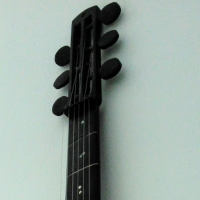DjangoBooks.com
Welcome to our Community!
Categories
- 20K All Categories
- 1.1K General
- 476 Welcome
- 59 Archtop Eddy's Corner
- 146 CD, DVD, and Concert Reviews
- 384 FAQ
- 26 Gypsy Jazz Italia
- 26 Photos
- 202 Gypsy Picking
- 21 Unaccompanied Django
- 15 Pearl Django Play-Along Vol.1
- 17 Gypsy Fire
- 45 Gypsy Rhythm
- 1.4K Gypsy Jazz University - Get Educated
- 130 Gypsy Jazz 101
- 224 Repertoire
- 218 History
- 707 Technique
- 51 Licks and Patterns
- 6 Daniel Givone Manouche Guitare Method Users Group
- 20 Eddie Lang Club
- 1.3K Gypsy Jazz Gear
- 801 Guitars, Strings, Picks, Amps, Pickups and Other Accessories
- 457 Classifieds
- 49 Recording
- 62 Other Instruments
- 18 Violin
- 5 Mandolin
- 22 Accordion
- 7 Bass
- 10 Woodwinds
- 346 Gypsy Jazz Events
- 142 North America
- 109 Europe
- 95 International












Comments
I'd almost call this a contrafact--though it also seems to do some reharmonizing as well as redesigning the melody. That intro riff/backing phrase reminds me of the Charlie Parker intro to "All the Things You Are." Come to think of it, the whole thing reminds me of what the bebop guys were doing to their material at the same time--or that Coleman Hawkins did to "Body and Soul" a decade earlier.
BTW, in the 1940s one would more likely characterize a tune not composed by the performer as "repertory." When Gershwin wrote "Lady Be Good" he was not primarily a performer, and the singer-songwriter category was a much, much smaller part of the musical environment--the most common production model was composer-publisher-performer, often with the first performance being as part of a musical or revue. Instrumentalists and bandleaders wrote new material often enough, but the core of most ensembles' repertory was what we now call "standards." The "cover recording" was a business practice devised to funnel niche material (blues, country, R&B) to broader markets that would not otherwise have noticed or accepted it--for example, Pat Boone's famously sanitized versions of Little Richard.
Thanks for sharing! It's interesting to know this history, because I have a tendency top look at things from a more modern lens, with out all the facts. I checked out the Charlie Parker tune and I can see the similarities. I like the creativity. The first time I heard this version of Lady Be Good, it took me a while to realize what II was listening to. I would like to see more modern players incorporate a contrafact into their tunes.✌️
This shows just how incredibly creative Django was. It is not only a really unusual re-imagining of the tune but so incredibly different from the previous two versions they did; the second with Eddie South and Michel Warlop. However, I do agree this is particularly unusual even by Django's standards and it works.
youtube.com/user/TheTeddyDupont
I wholeheartedly endorse.
I always thought Django's version of The Peanut Vendor was weird and kind of hilarious. When Django solos, it reminds me of those late in the night jams, maybe with a certain smell of something in the air.
Django clearly does not take this particular recording seriously. He initially plays an odd accompaniment and then a totally jokey solo quite unlike anything else he ever recorded. They chose a very weird selection of tunes at these two sessions and I think they tended to treat them almost as jams. Despite that, Django produces some beautiful and powerful performances. The last time we hear Django and Steph together.
youtube.com/user/TheTeddyDupont
How about Oscar Aleman's insane intro to I Got Rhythm https://m.youtube.com/watch?v=Q. Or the clarinet intro to 1940 Nuages?
A bit off-topic, but that double cd of Oscar Aleman is great! I first heard of him when his version of Besame Mucho was on the radio program "Guitare, guitares" on France Musique.
this cd (the first of the two) is on repeat the whole day in my house today :)